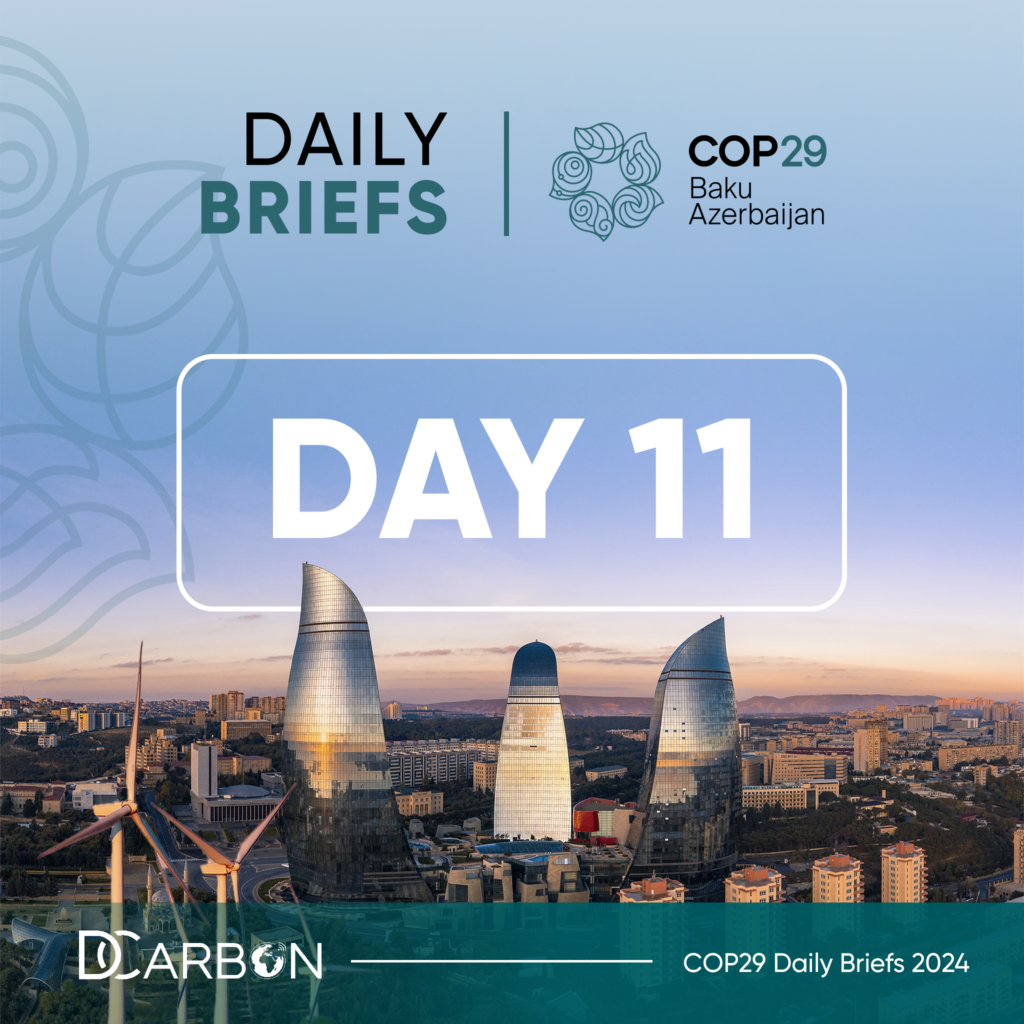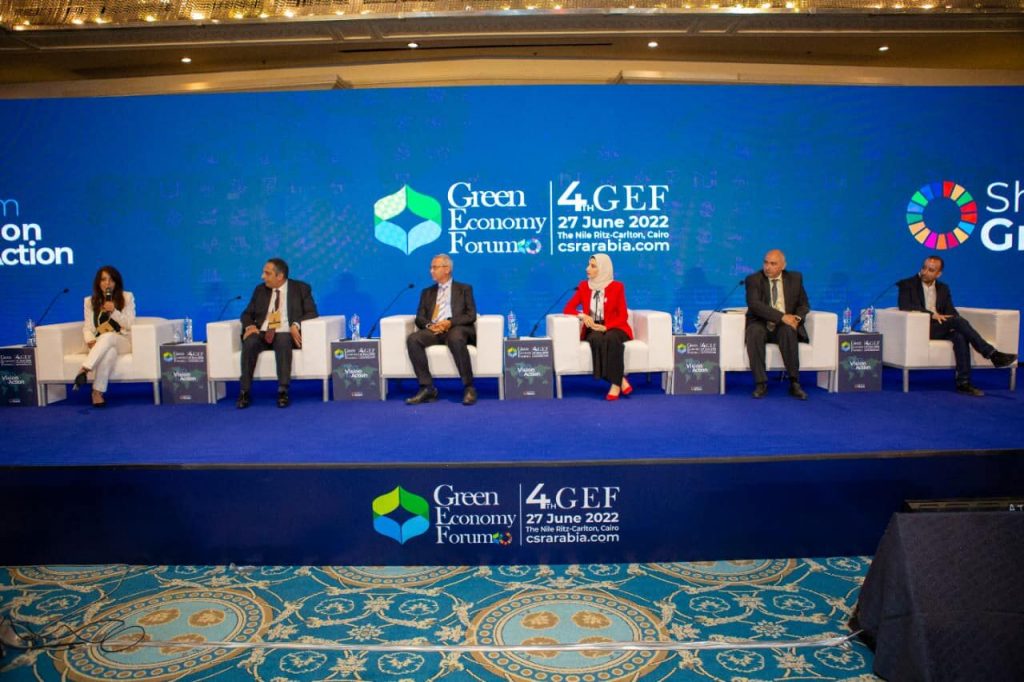Blue Zone
November 22nd, 2024 marks the day when cop29’s curtains fall in Azerbaijan’s capital, Baku, yet its agenda and drafted commitments will remain memorable. Throughout the past few days, the summit’s Blue Zone was buzzed by dynamic negotiations, intense dialogue, and cutting-edge agreements among global leaders to bolster the universal climate narrative. The intriguing question that will captivate minds in the days ahead after COP29 closure is what was discussed at this year’s COP.
This year, global leaders laid a solid foundation and kickstarted discourses on specific critical climate financing and mitigation issues. Parties came to common ground on establishing a UN-backed body to forge international standards for global carbon market trading. This decision has raised expectations to unlock climate finance opportunities, specifically for developing countries. Core influential developmental banks, including the World Bank, embarked on unprecedented pledges to increase climate finance allocation to $120 billion annually by 2023. The 2024 conference also shed light on the potential climate change effect on the overlooked vulnerable populations like youth, women, migrants, and refugees, emphasizing the need for inclusive climate action strategies. Corporate role in combating climate change and achieving global net-zero carbon targets, upholding further pressure on businesses to integrate sustainability within their models. Finally, leading tech companies, like Amazon and Google, were trapped in the crosshairs for their energy-intensive AI-driven data centers and systems. With the initial agreements setting the stage, it is time for the COP29 presidency to propose its verdicts shaping COP29 final settlements.
Cop29 stumbled towards’ establishing a 2025-35 climate finance commitment from developed to developing countries
As the Cop draws to an end, all eyes have been fixed on the release of decisions and proposed text drafts to culminate past weeks’ efforts and demands to address the most pressing climate change adversities. This year’s decisions are deemed to be of particular essence since the year 2024 is set to be the first year to breach the 1.5C global warming cap. The European Climate Service asserts that by the end of 2024, the year will be the warmest on record. Amid these concerns, the core focus of COP29 was mainly on money. It is labeled as the “finance cop” to bridge financing gaps in combating the increasing severity of climate-related disasters. The conference closing resolutions have been highly anticipated to get its act together to push for the long-awaited deal of mobilizing trillions in climate finance. Developing countries wanted to see more from rich countries in terms of what they owe for green funding. That is, how much will they pay them to deploy clean energy and install resilient infrastructure? Representative global governments at the summit have been tasked with agreeing upon a climate change financing plan. A new draft proposal declares the Parties’ indications of the New Collective Quantified Goal (NCQG) decision by calling for all parties to scale up climate financing from all public and private sources to at least $ 1.3 trillion per year by 2035 to support climate action of developing countries. The released draft further set forth a deal on cash, with developed countries taking the lead in mobilizing $250 billion annually by 2035 to help poor countries curb climate change and adapt to extreme weather shocks. This comes as an extension to the outstanding COP15 target of joint mobilization of an annual $100 billion by 2025. Though the new target is equivalent to more than double the previously set goal, it is a quarter of the sum demanded by developing countries. It pleased those who will pay but fell short of recipient countries’ expectations, sparking a pretty hostile reception.
Developing countries have already hinted before that they are unwilling to accept any offer of less than $500bn. In straightforward terms, they explained their actual need for aid to shift away from fossil fuel reliance and drive resilience against uprising climate challenges. Authentic leadership from the COP presidency and the Global North nations is imperative to land this deal to its real climate-friendly value added. So far, few developing countries have commented on the draft, but the responses are pretty mixed. Chris Bowen, the Australian climate change minister, has responded to the presidency’s offered text, describing it as a “genuine attempt.” However, the text dismayed specific vulnerable developing economies like Kenya, Uganda, and Malawi that are harshly impacted by climate change and natural disasters when they have contributed to global warming. Kenya’s envoy for chair of the African Group of Negotiators, Amb Ali Mohamed, dubbed the latest text as “totally unacceptable and inadequate.” India renewed its call to provide most of climate finance through grants rather than loans. Small island nations accentuated the need to allocate the funds equally between emission-reduction projects and adaptation-based initiatives. The scientist and chief executive of Climate Analytics, Bill Hare, viewed the proposed climate finance goal as “incredibly weak” with “massive issues” in the text. He said that the Azeri Presidency text sidelined the small islands and least-developed nations with no mentioned acknowledgment of their unique conditions, aligning with the Paris Agreement. As a climate envoy of one of the developing countries, Panama, Juan Carlos Monterrey Gómez said that it is far beyond not enough; developing countries need at least $5tn a year, yet they asked for just 1% of global GDP ($1.3bn) and still got nothing in hand. He also clarified that dividing the specified amount among all developing and least developed countries will eventually amount to very little. It won’t only place the planet on a path to 1.5C but rather more like 3C. Leaders of the Independent High-Level Expert Group on Climate Finance brought into light their analytical outcomes, stating that developing countries should commit “to provide at least $300 billion per year by 2030 and $390 billion per year by 2035”. Activists criticized the draft for lacking any classification of the encompassed sources of finances to channel funds through. Vagueness regarding how much financing will come from grants or loans raised concerns among some developing countries about their debt burden. On the other hand, rich countries said that the text set realistic thresholds in accordance with the limits of what they are able to do. Mary Robinson, the former president of Ireland and a UN climate envoy, pinpointed that rich countries’ budgets have been entrenched amid inflation and the Russian-Ukrainian war, requesting that poorer nations be more flexible in compromising.
Aside from the raised tension on the text, NCQG is chiefly at risk of being shortfall without the straightforward integration of the US private sector. While the world’s largest economy might have been anticipated to put in place a tremendous sum of green financing solutions, the fact of Donald Trump’s re-election upended such prospects. The newly re-elected president is commonly known for his anti-environmentalist vows to withdraw the US from the Paris Agreement. Lastly, a consensus is reached regarding the urgent need for a dramatic change in the deal as long as parties aspire to leave Baju with a groundbreaking financial target to support the fossil fuel phaseout in avoidance of violating the 1.5°C. In response to the widespread backlash, COP29 lead negotiator Yalchin Rafiyev, Azerbaijan’s deputy foreign minister, confirmed that the presidency will continue to engage with potential parties and push countries to go beyond the $250 billion to meet COP29 fair goals. With this, the two-week conference that was supposed to come to an end on Friday evening surpassed its allotted close as wrangling division between wealthy and poor governments continued.
Defining International Standards: Progress on Texts of Carbon Market Trading Rules
COP29 closed to putting COP29 negotiations on how new UN-backed global carbon crediting and trading mechanisms can function and be ruled into published texts. The text entailed more details on rules governing how countries can plan to employ carbon credits to meet their national emission reduction targets in adherence to the Paris Climate Agreement in Article 6.2. The rulebook clarifies how countries are allowed to trade carbon credit with one another, as well as among companies. Lambert Schneider, research coordinator for international climate policy at Oeko-Institut, praised the latest text as an “important achievement” and an outcome of fruitful discourses where negotiators have ironed out considerable unaddressed issues to be reversed. This includes provisions for a robust accounting of credits that countries can use against their climate targets, as well as for more detailed information from countries on how the credits they trade meet general market standards of environmental integrity. A number of the shortcomings of the carbon credit market text still hold. Gaps include a lack of consequences for countries that are inconsistent in terms of reporting. Industry campaigners are worried that the settled rules may set a low cap for countries facilitating trading credit for initiatives with low environmental value.
Strengthening Climate Adaptation and Resilience: Key Highlights from the Baku Adaptation Roadmap and UAE–Belém Framework
A draft under the theme of Global Goal on Adaptation (GGA) was published, stressing enhancing adaptive capacity, strengthening resilience, and reducing vulnerability to climate change. The draft is issued under the UAE–Belém work program to refine global indicators for adaptation efforts. A framework is outlined to improve global adaptation goals through workshops and knowledge-sharing programs in cooperation with the IPCC. Special attention has been given to incorporating gender equity and indigenous peoples’ perspectives into the adaptation strategies. Developing countries and small island nations come as the top priority to enhance the implementation of their 2030 national adaptation strategies.
Saudi Arabia’s Resistant stance on Rejecting Commitment to Phasing out Fossil Fuel Text
Other stalemates made the closure day imminent. Developing countries, specifically the EU members, raised concerns about adherence to the COP28 deal, demanding the Baku texts restate pledges to “transition away” from fossil fuels. Saudi Arabia strictly opposed this, stressing its rejection of any text targeting fossil fuels.
Cop29 has brought forward a strand of crucial proposals to resolve pressing climate challenges, nonetheless, the path forward is still complex. From ambitious standards ruling carbon trading markets to puzzling debates on strategizing climate finance, the summit mirrors not only progress but also divisions. As governments bid farewell to Baku, implementing resolutions marks the global need for sustained dialogue to shapeshift goals into actions.
Green Zone
The Final Day in the Green Zone
The final day in the Green Zone at COP 29 began with a powerful call for urgent, collective action to combat the global climate crisis. The presidency emphasized the importance of inclusive participation, particularly from non-state actors such as corporations, civil society, and youth groups. The opening remarks underscored the Green Zone’s role as a dynamic hub for showcasing innovative climate solutions and fostering partnerships that complement formal negotiations in the Blue Zone.
Opening Statement
Building on this momentum, the opening remarks set a resolute tone, highlighting the critical need for transformative action. Delegates reaffirmed their commitment to the Paris Agreement goals, stressing the importance of accelerating the global transition to a low-carbon future. The Green Zone’s inclusive atmosphere was hailed as essential for connecting grassroots efforts, private sector initiatives, and governmental strategies to achieve shared climate objectives.
Negotiation Documents and Key Context
A record-breaking number of over 200 negotiation documents were presented, covering a diverse array of critical climate-related topics. These included proposals on emissions reductions, climate finance mechanisms, adaptation strategies, technology transfers, and nature-based solutions. In the Green Zone, discussions bridged corporate innovations and international frameworks, such as the New Collective Quantified Goal (NCQG) on climate finance and pathways to operationalize the Global Goal on Adaptation.
Particular attention was given to the need for more ambitious emissions reduction targets and ensuring vulnerable regions have access to adaptive technologies. Corporate participants actively contributed by aligning their initiatives with these goals, with discussions highlighting pathways for measurable progress by 2025.
Initiatives by Companies and Corporations
Prominent corporations leveraged the Green Zone as a platform to showcase their sustainability initiatives. Key highlights included:
- Renewable Energy Innovations: Advancements in green hydrogen and solar technologies, with plans to deploy these solutions at scale.
- Circular Economies for Critical Materials: Strategies to recycle and repurpose lithium and cobalt, addressing supply chain risks and minimizing e-waste.
- Water Management Systems: Innovative solutions to enhance water security and reduce agricultural pollutants.
- Notable corporations committed to implementing these innovations through pilot projects starting in 2025, demonstrating a clear alignment with global climate goals and the Paris Agreement targets.
Some Notable corporations intended efforts:
- DHL – Highlighted its multi-faceted strategies to accelerate sustainability, particularly in logistics and supply chain innovations
- Microsoft – Focused on leveraging technology to revolutionize sustainability efforts, including energy-efficient solutions
- Aramex – Presented its innovations in driving sustainable logistics through advanced technologies
- ABB Group – Represented by its Chief Transformation Officer, Taleh Tahirli, ABB emphasized its efforts in sustainable energy and green technologies
- GreenSpace Tech Hub by Deloitte – Demonstrated its role in innovation and partnerships that advance global climate goals.
Moreover, the Green Zone hosted a panel discussion titled “Building Tomorrow: The Legacy of COP29 in Azerbaijan”, organized by the COP29 Azerbaijan Operating Company and GILTEX, the Green Zone’s Textile Partner. Moderated by Jeyhun Atayev, Head of COP29 Legacy Initiatives, the panel focused on the long-term impact of Azerbaijan hosting COP29 on sustainable development and climate change efforts locally and globally. Panelists included prominent figures such as Malini Mehra, CEO of GLOBE International; Natavan Mammadova, Executive Director of the National Confederation of Entrepreneurs Organizations of Azerbaijan; Marcos Neto, Director of the UNDP’s Sustainable Finance Hub; and Farida Akhundova, Executive Director of the Azerbaijan Textile Association. They discussed Azerbaijan’s green transition, its role in global partnerships, and how hosting COP29 accelerated the country’s climate resilience and policies aimed at sustainable, low-carbon development. This session reflected Azerbaijan’s commitment to leaving a lasting legacy of climate leadership.
Closing Statement
The Green Zone concluded with an acknowledgment of significant progress achieved in advancing grassroots and corporate climate action. The presidency commended participants for their contributions and emphasized the need to integrate lessons learned into future COP conferences. Delegates reaffirmed the importance of sustained collaboration across sectors to accelerate the transition to a low-carbon, climate-resilient future.
Overall Resolution in the Green Zone
The Green Zone’s resolution reinforced the critical role of private-sector innovation and public engagement in addressing the climate crisis. Stakeholders are committed to translating grassroots solutions into scalable actions, highlighting partnerships as key to tackling challenges such as financing gaps, adaptation, and resilience building. By showcasing tangible projects and fostering collaboration, the Green Zone at COP 29 made significant strides in mobilizing climate action beyond governmental frameworks. Its achievements, while incremental, laid the groundwork for scalable, impactful solutions that will contribute to the global response to the climate crisis. As the world moves forward, the success of COP 29 will ultimately be measured by the international community’s ability to sustain momentum, enhance accountability, and deliver on the commitments made to protect the planet for present and future generations.
References:
https://unfccc.int/documents?f%5B0%5D=conference%3A4617
https://www.chinadaily.com.cn/a/202411/23/WS67412428a310f1265a1cf2da.html
https://www.businesstimes.com.sg/esg/cop29-close-carbon-deal-questions-loom-about-market-integrity
https://unfccc.int/documents?f%5B0%5D=document_type%3A4168
https://unfccc.int/cop29/updates-archive
https://www.azerbaycan24.com/en/?s=cop+29
https://cop29.az/en/media-hub/news





